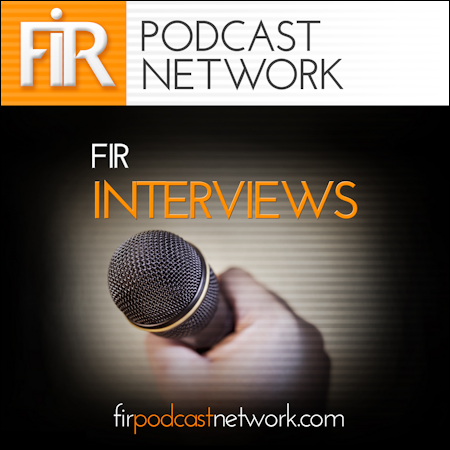
Amid congressional hearings and FBI investigations in the US about whether and how Russia interfered with the US Presidential Elections, discussions continue about the efficacy and ethics of micro-targeting voters. In our latest and 10th edition of the SmallDataForum podcast, Neville, Sam and Thomas reflect on the outcome of the recent general elections in the UK.
This episode’s show notes were written by Thomas Stoeckle.
We agree that, unlike last time, Labour did better than the Conservatives digitally at this election.
In combining doorstep campaigning with digital targeting in marginal seats (based on the insights from their proprietary software) and generally being on the ball with issues online, Labour managed to connect the dots more successfully than the Conservatives.
This Amazon- or Netflix-style micro-targeting is seen by some as a ‘dark art’. But as Sam points out, we never see the mechanics of what happens in advertising and marketing. People seem to get nervous now it is happening on an individual level – but if this approach doesn’t alienate more than it delivers, if the tracking and tagging and serving up can strike a healthy balance of how much you serve to whom, then this is likely to be a successful formula for the future.
It might even help motivate and mobilise that growing slice of the electorate that chooses not to participate in elections.
So a successful campaign needs to have good, positive messaging. It needs to give people a compelling story. It needs great messaging, it needs to understand its audience, it needs the right tools, the right mindsets, and the right people on- and offline. Nothing really new, apart from the hugely increased fine-tuning opportunities, which are driven by ever-increasing amounts of available data. Big Data, however, is never a be all and end all.
Technology ethnographer Tricia Wang’s TED Talk makes this very clear (thanks for the link, Sam): it takes more than just ‘big’ data to make data-driven decisions – you need the right data. And to make it right, you need more than just more volume.
Tricia Wang calls this thick data, and it is very similar to Martin Lindstrom’s idea of Small Data: data that comes from talking with people, from engaging with them in their environment. Data that is observational, qualitative, generated by curious researchers, tapping into anthropology and ethnography to reveal a human narrative that, together with Big Data, helps form a more complete picture, to inform better decisions.
Which brings us to our passionate exchanges about the evolving role of the PR professional, and the role and purpose of PR in general.
What is its main aim, its currency? It is trust? Is it attention? Is it to create effects through messaging? And what is the role of data in all of this?
 LexisNexis recently published an e-book about the Evolving Skillset of the Modern PR Professional. It makes the point that all the core skills of the modern PR professional are centred around helping organisations gain and maintain the trust of their stakeholders. Whether it is verifying information in an age of fake news, engaging the right influencers in close-knit communities, performing analytics to glean insights for better decisions and orchestrating successful multi-channel approaches – trust is the only currency that matters.
LexisNexis recently published an e-book about the Evolving Skillset of the Modern PR Professional. It makes the point that all the core skills of the modern PR professional are centred around helping organisations gain and maintain the trust of their stakeholders. Whether it is verifying information in an age of fake news, engaging the right influencers in close-knit communities, performing analytics to glean insights for better decisions and orchestrating successful multi-channel approaches – trust is the only currency that matters.
Whilst we all agree on the need for more and better education (currently led by organisations such as the CIPR in the UK, and the Institute for PR in the US), as well as on more and better investment in analytics – our views differ somewhat when it comes to defining purpose, and more specifically, the role of trust.
One sees trust as a measurable outcome. The other sees trust as a means to an end, a bridge to a business outcome. And the third might argue these are two sides of the same coin. Expect that conversation to continue in SDF 11…
We discuss John Wanamaker‘s famous adage that “Half the money I spend on advertising is wasted; the trouble is, I don’t know which half”. More and better data, combined with more and better tools to analyse, can take us a lot closer to finally identifying which half is working. Sam recommends combining the best of econometric modelling, building granular cause & effect models to understand contribution by channel, and linking it to digital attribution. Observing everything that is happening, and then assessing it bottom up as well as top down.
Neville stresses the importance for companies and agencies to continue to build their own analytics skills.
After some reflections on gurus and gnus (you will have to listen in order to make sense of this), episode 10 of the SDF podcast concludes with a quote by Edward Bernays (seen by many as the ‘father of PR’), who almost 90 years ago in his book Propaganda described the public relations role as such:
“The conscious and intelligent manipulation of the organized habits and opinions of the masses is an important element in democratic society. Those who manipulate this unseen mechanism of society constitute an invisible government which is the true ruling power of our country. […] In almost every act of our daily lives, whether in the sphere of politics or business, in our social conduct or our ethical thinking, we are dominated by the relatively small number of persons…who understand the mental processes and social patterns of the masses. It is they who pull the wires which control the public mind.”
We will come back to that in the next episode.
Listen to the Show:
- Share your comments or questions about this podcast, or suggestions for discussion topics, in the online Small Data Forum community on LinkedIn.
- Don’t miss any episode – subscribe: RSS | iTunes
 Thomas Stoeckle leads strategic business development at LexisNexis Business Insight Solutions (BIS). Prior to joining LexisNexis, he was group director and global analytics lead at W2O Group, and managing director at Report International (now CARMA).
Thomas Stoeckle leads strategic business development at LexisNexis Business Insight Solutions (BIS). Prior to joining LexisNexis, he was group director and global analytics lead at W2O Group, and managing director at Report International (now CARMA).
A marketing communications researcher and business leader with 20-plus years’ experience in helping clients make sense of their global (social) media footprint, and how that affects perception and reputation, he believes passionately in meaning and insightful business story-telling through robust data evidence and compelling visualisation.
Originally from Germany, Thomas has been living and working in London for more than 16 years. A digital Neanderthal among digital natives, he is keenly aware that adequate solutions to communications problems demand fluency in the three languages of humans, machines, and business.
(Picture at top via Pixabay. CC0 Public Domain.)











